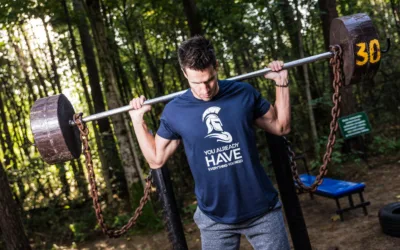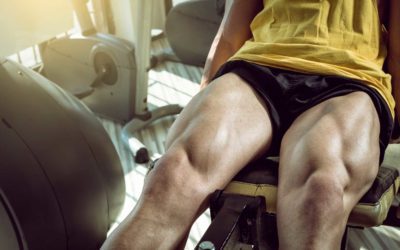How to Get Your First Pistol Squat
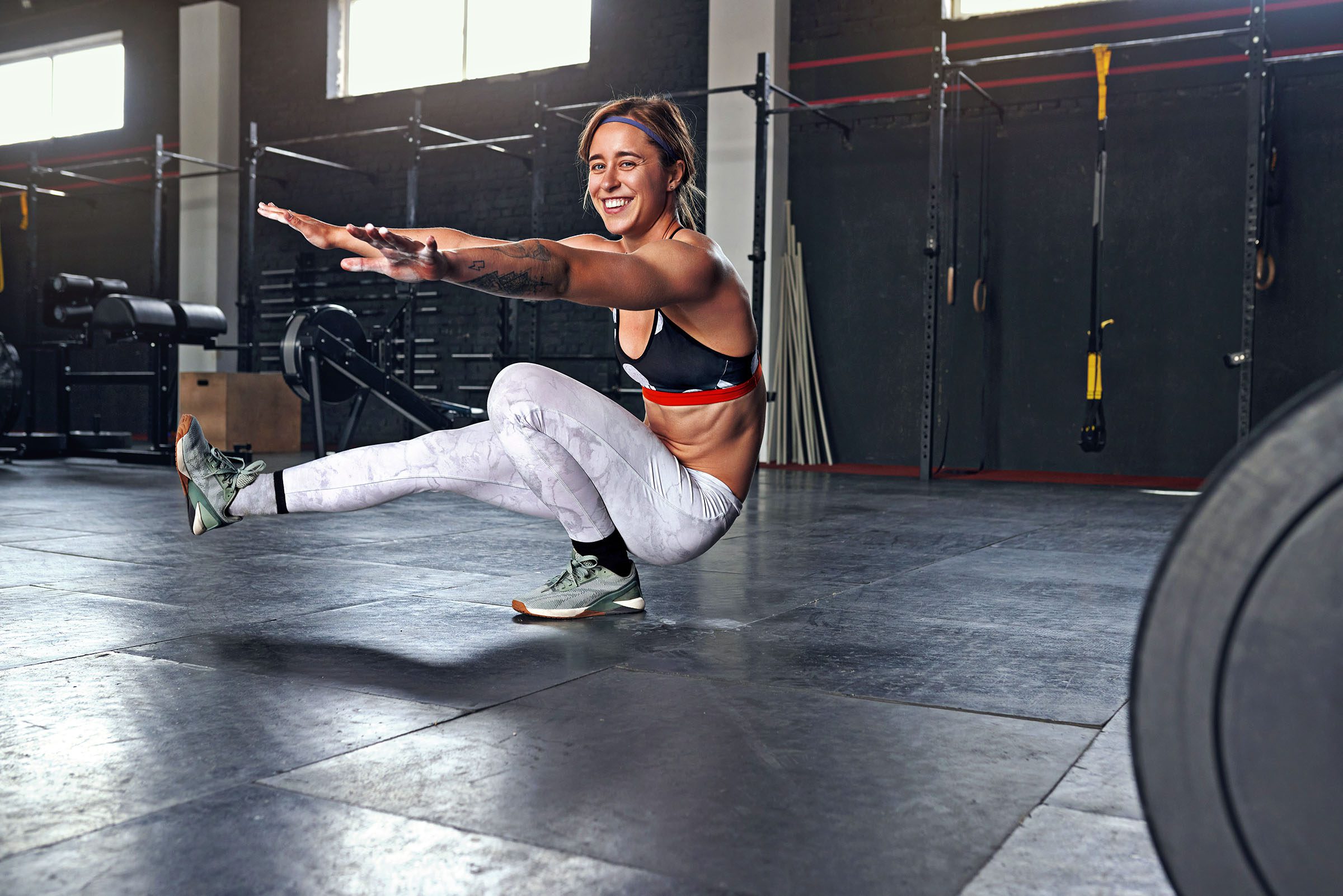
Martin Mancero is an ACSM certified personal trainer, ActiveLife Immersion Graduate and online coach. Sebastian Subia is also an ACSM certified personal trainer, as well as an ISSA certified strength and conditioning coach, CF-L1, CF Gymnastics, and online coach. In this article, they’ll teach you the benefits of the pistol squat and guide you through tests you should be able to clear before you nail your first pistol


The Ultimate Single-leg Strength Test
The pistol squat is a multi-joint exercise that involves several different muscle groups, but your quads, glutes, and core are the key ones. This exercise requires not only a great amount of strength, but also a high level of stability, balance, and mobility. Pistols are used by athletes around the world as part of their training and in competitions.
This one-legged squat is a unilateral variation of the regular air squat, in which one leg is held up off the ground in front of you, while the grounded leg performs the squat. Your squatting leg supports all of your body’s weight during both movement phases: the eccentric phase (flexing the joints and going down) and the concentric phase (extending the joints and going back up to its normal position).
Benefits of the Pistol Squat
1. The pistol squat will help identify and correct imbalances. If you have one significantly stronger or more flexible side, this movement will help you identify and address the issue.
2. It’s a great alternative to increase the load or intensity of exercises without increasing weight. If you are working out from home, or don’t have access to weights for whatever reason, simply switching to unilateral movements (such as the pistol squat) will ensure you keep making progress.
3. Core activation. When doing pistol squats or other single-leg movements, you recruit both the larger muscles in your core and the smaller muscle groups, commonly referred to as “stabilizer muscles” (you know what I’m talking about – the ones that start shaking when you stand on one leg or hold a plank for a while).
4. Unilateral exercises require more focus and coordination than bilateral exercises. This generates better mind-muscle connection, which increases contraction potential and control of the involved muscles.
You Work too Hard to Not See Progress
Find Your Perfect Training Plan
Options for Every Goal
Training plans from real coaches covering any goal, fitness level, and number of sessions per week.
The Best Coaches
Get coached by the best. Olympians, ex-NFL stars, Titan Games Winners, Sport Scientists and more.
Starting at $1/ day
With many options including a free 7 day trial, you can try out programming before you commit.
Pistol Squat Pre-reqs
We don’t recommend trying to do a pistol before mastering the deep squat (according to your individual anatomy and flexibility) or if you have knee, ankle, or hip injuries. You should have a solid strength/mobility base with bodyweight or free weight exercises first before attempting your first pistol.
Even if you’ve mastered the deep squat, you might need to assess your mobility in your three main leg joints: hips, knees, and ankles. If one of these joints has any type of restriction, like mobility limitations or a chronic injury flare-up, you’ll need to work on your range of motion (ROM) first. Consider checking with your PT on this one.
Check out these tests if you’re not experiencing pain and want to assess your mobility before working on pistols.
Test Your Ankle and Hip Mobility
Ankle dorsiflexion against wall (both sides): Plant your foot 4-5 inches away from a wall. With the foot planted on the ground, and without lifting your heel, bend the knee and try to touch the wall. If you get there, your ankle mobility is a-ok to practice the pistol squat.
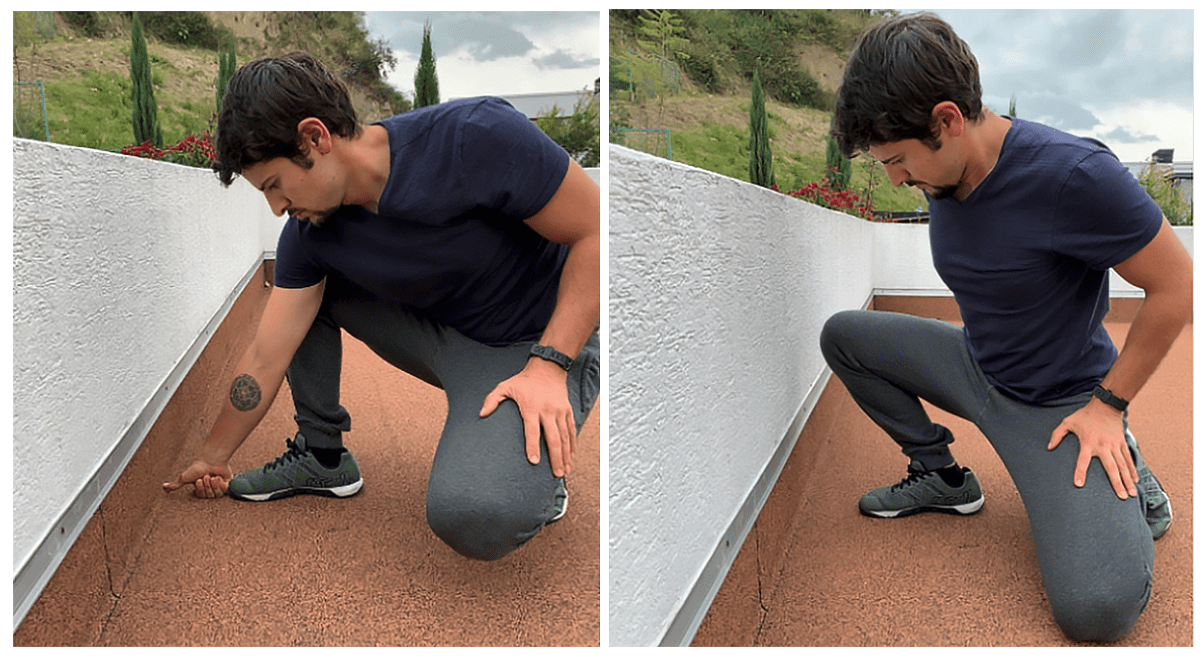

Supine hip flexion test (both sides): Lie on your back with both legs extended. Flex one leg and try to bring your knee as close to your chest as possible. Go as far as you can without using your arms, then grab the back of your knee and pull your thigh to your chest. Ideally, your thigh will make contact with your torso without any pain or discomfort on both sides.
Level Up Your Training
With TrainHeroic’s immersive training app
TrainHeroic does everything you wish your old gym notebook could do.
Take the guesswork out of training with built-in exercise instruction and basic training programs. Compete against yourself and others. Track your performance and readiness. Smash your goals.
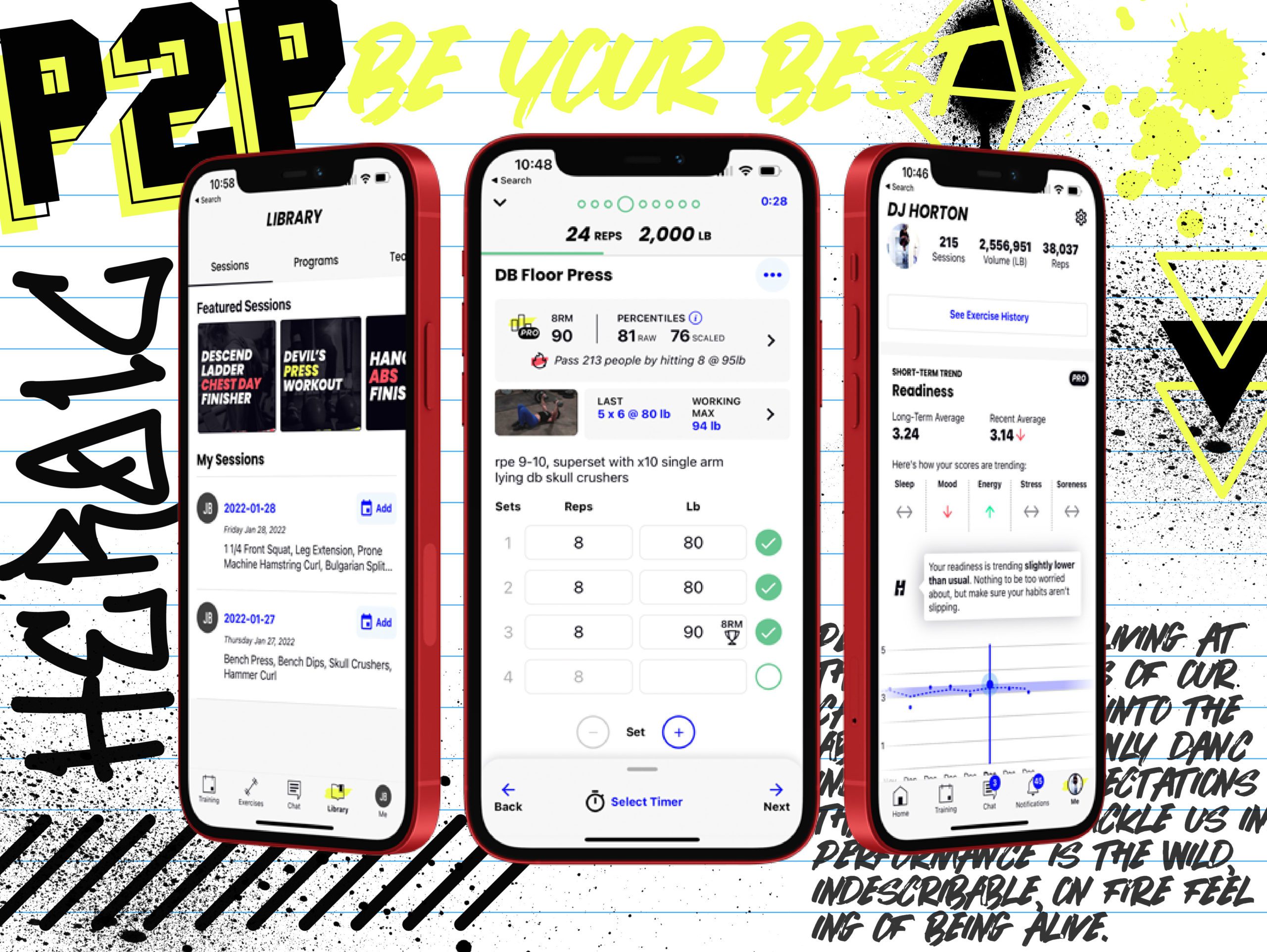

Pistol Squat Progressions & Accessory Exercises
Be sure to assess your strength — your glutes, quads, hamstrings and core should be working hard when doing pistols. If any of these muscles are weaker, or don’t fire properly, consider adding more unilateral movements like single leg RDLs or Bulgarian split squats into your training. If you ignore this, you might develop incorrect movement patterns that can affect your joint health in the long term.
Allowing time for a proper warm-up and doing accessory exercises can help you address weaknesses, work on imbalances and prevent injury before attempting a full pistol squat.
Accessory Drills to Get You Ready
Warm-up
This is essential for pistol squat practice. You should focus on: 1) raising your body temperature with 5-10 minutes of easy cardio and compound movements (jumping jacks, cycling, jogging, etc), 2) activating your posterior chain with banded steps, good mornings, and air squats and 3) ensuring your joints have enough range of motion with dynamic stretching.
Step-downs From Plates or Small Box
Start on top of a step or a pile of plates. Your foot must be parallel to the edge with the other foot suspended in the air. To practice the eccentric (lowering) phase, start by flexing the foot of your free leg to keep it active. Hinge at your waist and “sit back” into your squat, letting the free leg travel down to the floor. Stand back up to return to the starting position. This movement will help you gain strength, mobility, balance, and get used to the weight of your body on one leg.
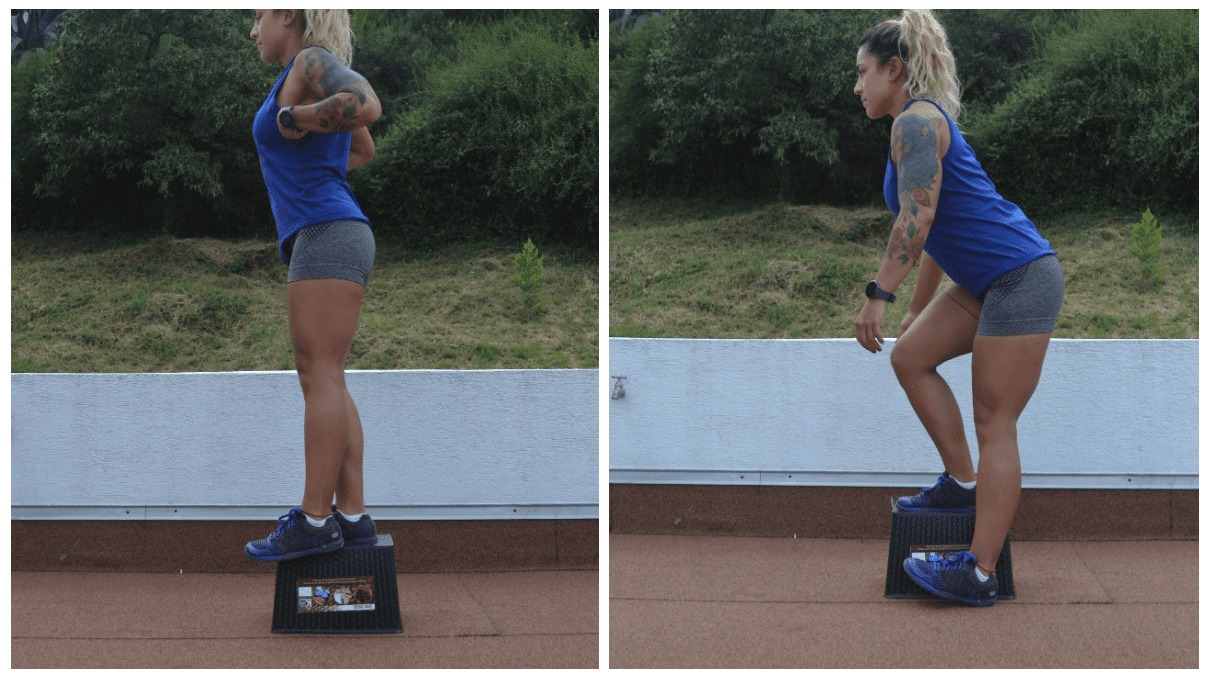

Alternating Leg Wall Sits
This exercise is great to increase single-leg strength and stamina. Use this exercise if you feel like one leg is way stronger than the other – it will help you isometrically work your quads and avoid knee collapsing when squatting.
To perform this exercise, lean your back against the wall, place your feet one or two steps away from the wall and bend your knees at a 90-degree angle so your hips are against the wall at knee height. In this position, drive one leg into the ground and extend the other knee. Lift your foot from the ground, supporting all your weight on the standing leg. Alternate legs, and try to hold the position for 3-5 seconds at a time. The exercise can be done either for time (i.e. 1 minute on, 30 seconds off) or for reps.
Intermediate Progressions
Once you have good foundational strength and balance, try using some of these progressions to challenge yourself. These movements will help you develop the coordination needed to perform a full pistol.
Box step-downs and step-ups
This is a progression of the plate step-downs above and the cues are the same. The only difference is the height of the box or bench. Focus on pushing your butt back and controlling the tempo, especially in the eccentric (lowering) phase. Once you get to the ground try to push yourself up using only the leg that is on top of the step.
Pistols to box/chair
For our first pistol progression, start by performing a single-leg squat with a box or chair half a step behind you. The goal is to sit down slowly and push yourself up with one leg in the air the whole time. Remember to push your hips back and lower your body as slowly and controlled as possible. To increase difficulty, try gently grazing the target (not sitting completely), or using a lower box or chair when you feel ready.
Crossed-leg Pistol
The next progression is to perform a single-leg squat crossing the non-working leg behind the ankle or calf of your standing leg. Remember to always keep your chest up and look forward. Try to go as low as you can without lifting your heel from the ground. It is normal for your knee to go past your toes.
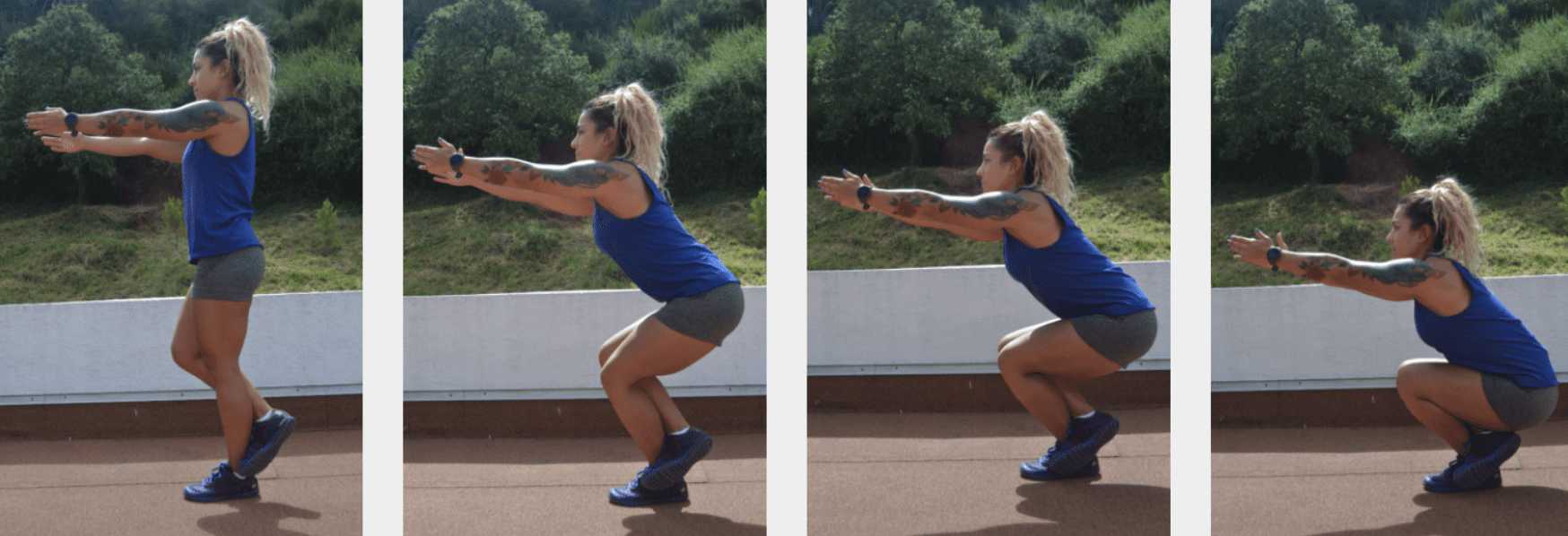

Advanced Progressions
Once you’ve successfully executed the intermediate progressions, you’re well on your way to getting your first pistol. These next progressions are slightly more advanced, but when you’ve got them mastered, you’re ready.
Partial or “cheating” reps
Similar to the cross-legged version, you can try doing partial pistol squat reps, lowering to ½ or ¾ of full range of motion. Try to go lower and lower until you get the complete range of motion. You can use the non-working leg as a pendulum and take advantage of the momentum to help you stand back up.
Heel-supported pistol squat
This last variation is useful if you have enough strength and mobility to go down on a pistol, but not enough mobility to keep the elevated leg up without touching the ground.
You can do reps using the heel of the foot that is elevated as support. It is important to try to raise the heel support higher and use it less every time. This will help work your hip mobility. Try adding a towel under your heel to help it slide on the ground if needed.
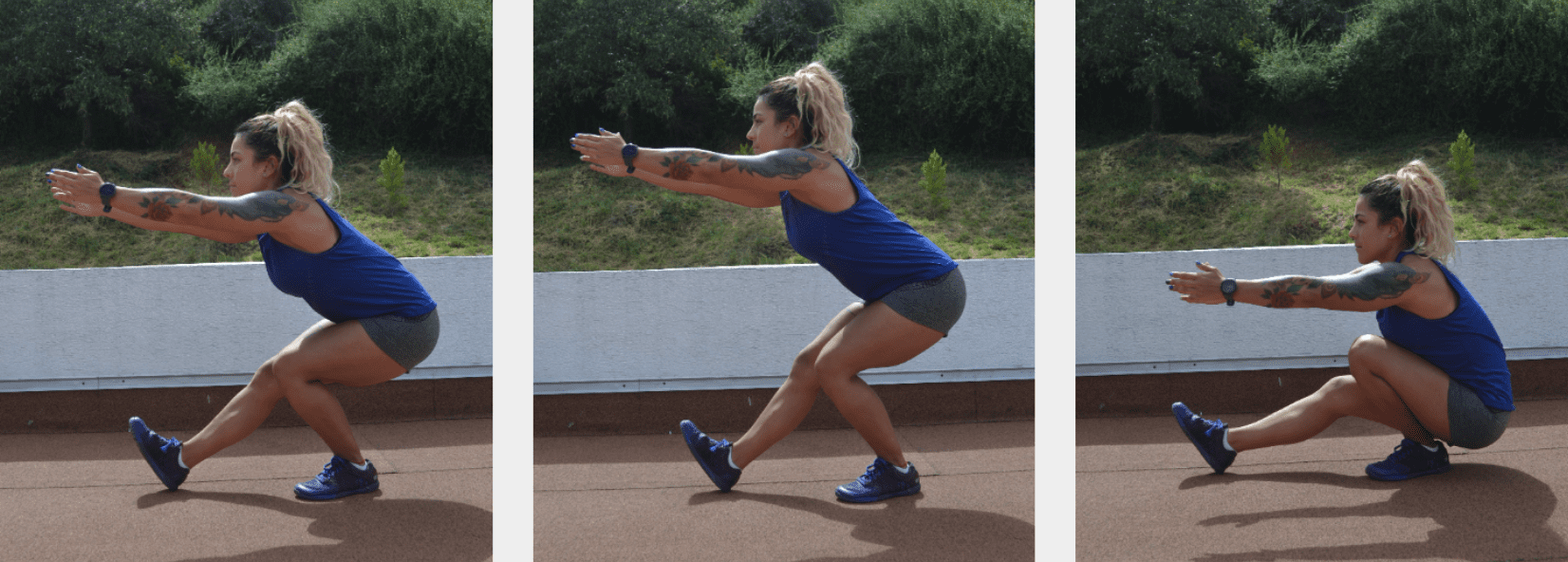

Coach’s Tip: Use these cues to help you master the full pistol squat:
- Look forward, don’t look down.
- Brace your core before starting the descent: take a deep breath to increase your intra-abdominal pressure.
- Use your toes for balance, spread them out and imagine you are “grabbing” the ground with your toes.
- Extend your arms forward and slightly out to increase balance.
Pistol Squat Variations You Should Use with Caution
If you’re using assisted progressions, we recommend using only one arm (the same side of the elevated leg).
What about using a plate to elevate your heel? This progression is seen in many Crossfit gyms and can be a good option for people who don’t have enough ankle mobility. If you do have enough ankle mobility though, you shouldn’t need to rely on a plate.
Figure out the most challenging progression for you, and work on that until you’ve got it down. When you’re ready to attempt your first full pistol, it should like this:
Want Training Tips, Exercise Guides & Knowledge Bombs Sent to Your Inbox?
Sign up for the FitNerd newsletter from TrainHeroic
Related articles
Slow Reps vs. Fast Reps
You’ve probably noticed that some people in the gym tend to perform their reps as fast as possible, whereas others take a slow and controlled approach. But which is better? Dr. Andy Galpin is a Professor of Kinesiology at the Center for Sport Performance at California...
How to Do Leg Extensions Without a Machine
Short shorts are the new stinger tanks. Rocking those big tree trunks with canyon deep cuts is so hot. Leg extensions are a bodybuilding staple—they isolate your quads, the front-facing muscle group of your thighs, by flexing (bending) and extending (straightening)...
Tried-and-True Methods to Fix Plantar Fasciitis
What is Plantar Fasciitis? If you’re new to running or returning to it after a break, you might have been blighted by plantar fasciitis, a fancy name for an annoyingly common foot problem. It’s when the band of tissue that connects your heel to your toes (the plantar...


Join the community
Sign up for the latest training news and updates from TrainHeroic


About TrainHeroic
Support
Made with love, sweat, protein isolate and hard work in Denver, CO
© 2021 TrainHeroic, Inc. All rights reserved.

